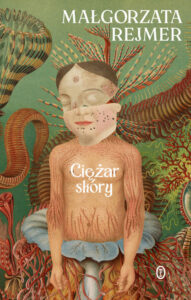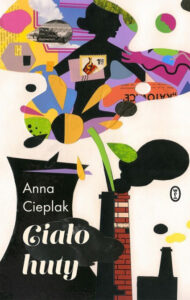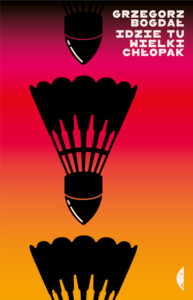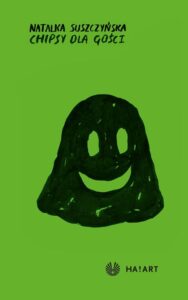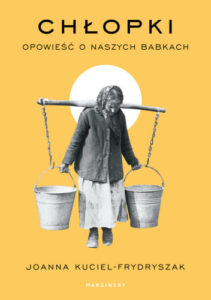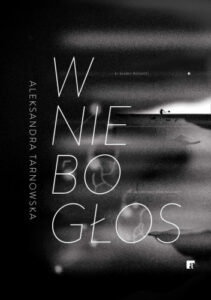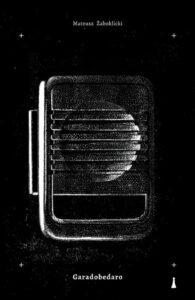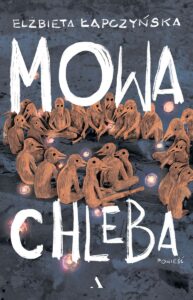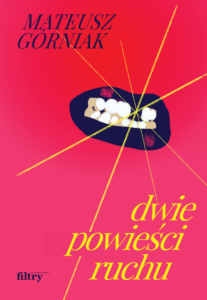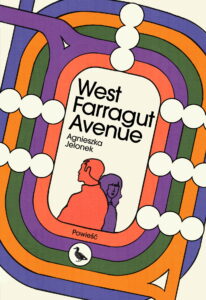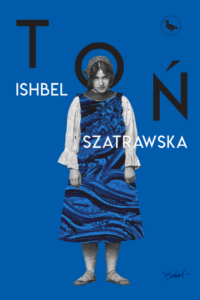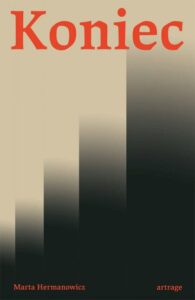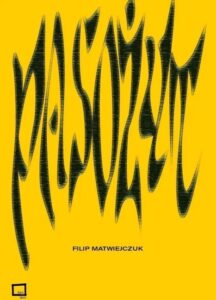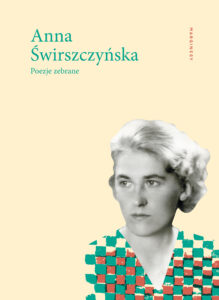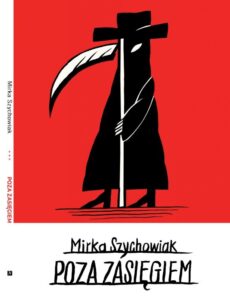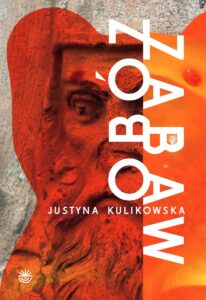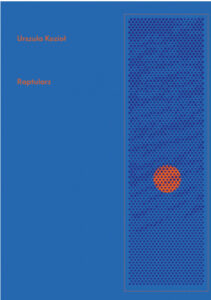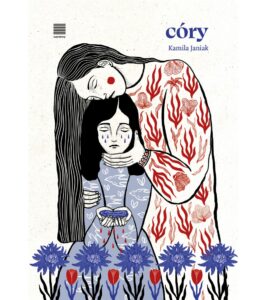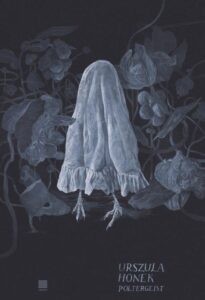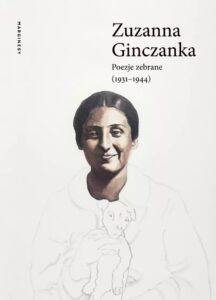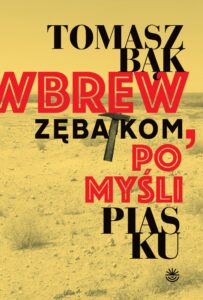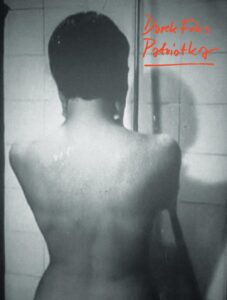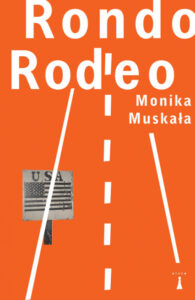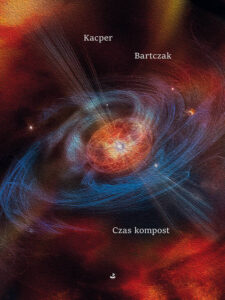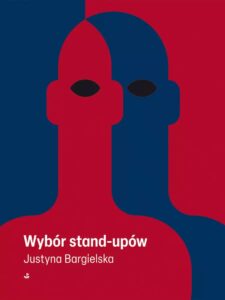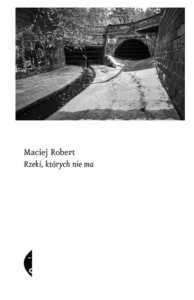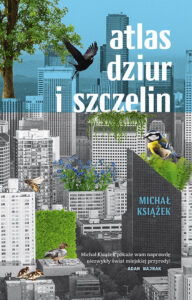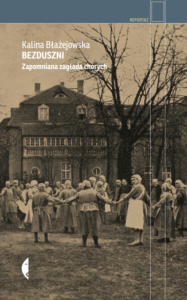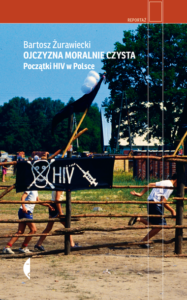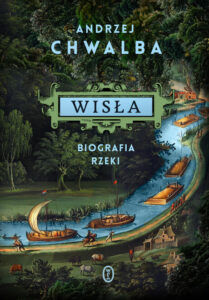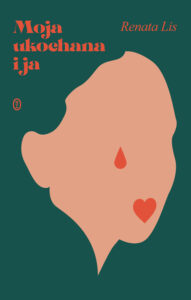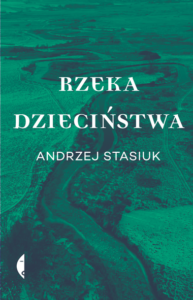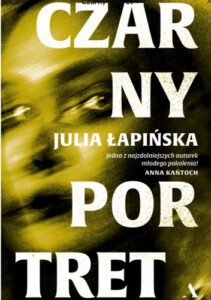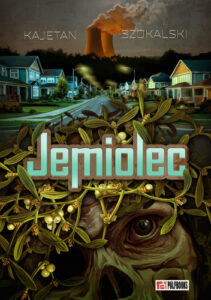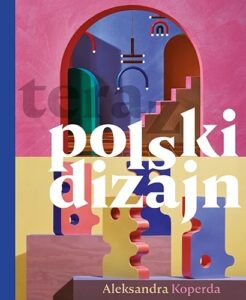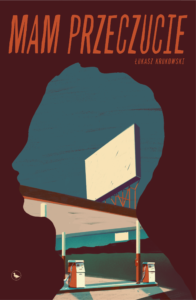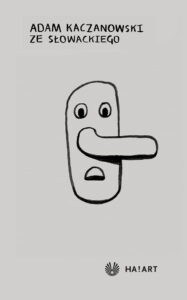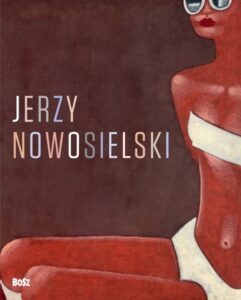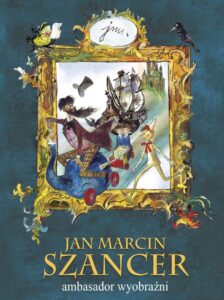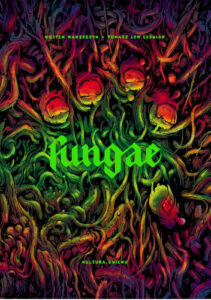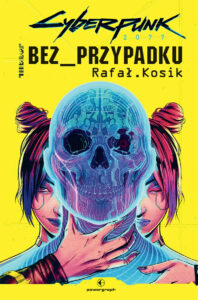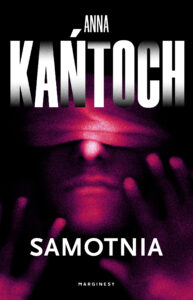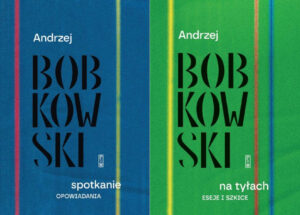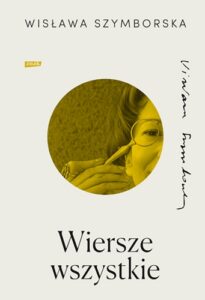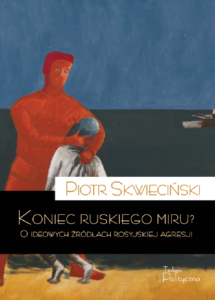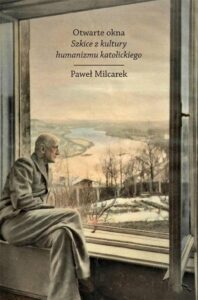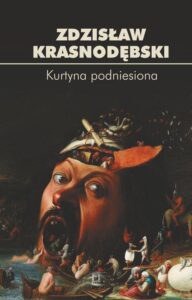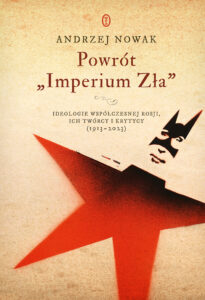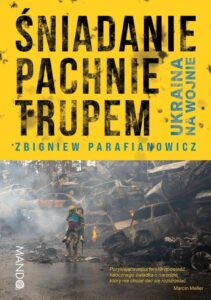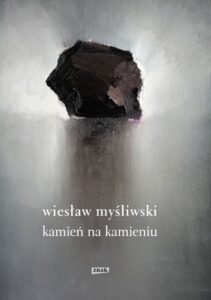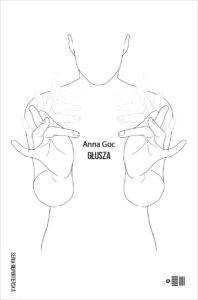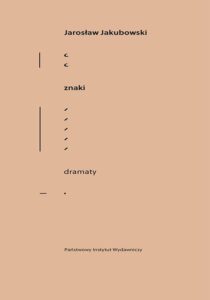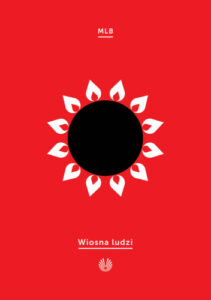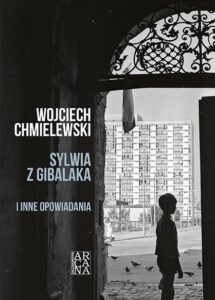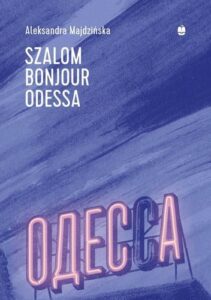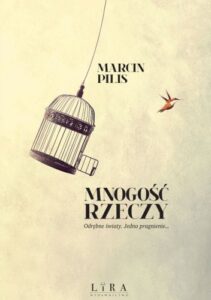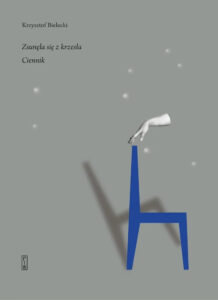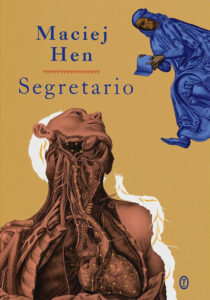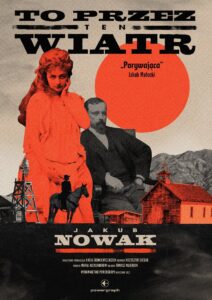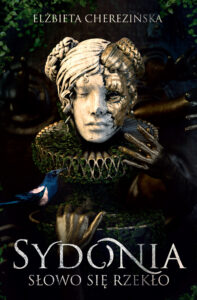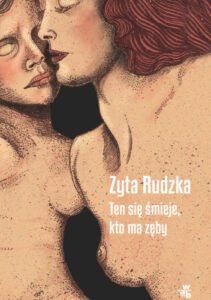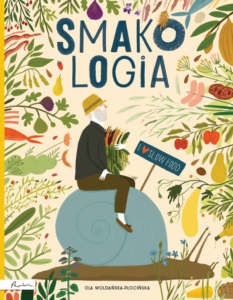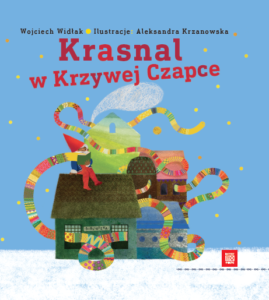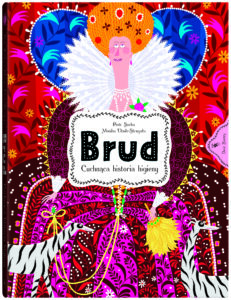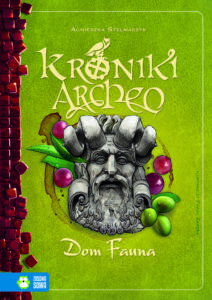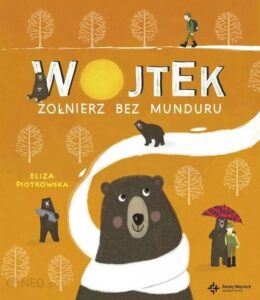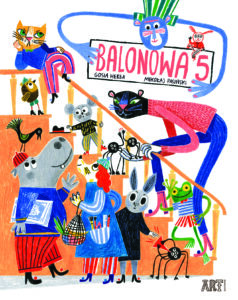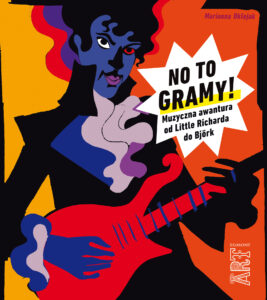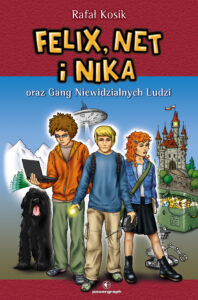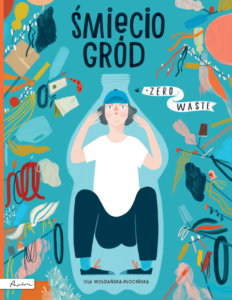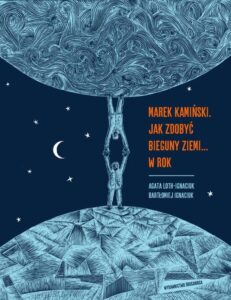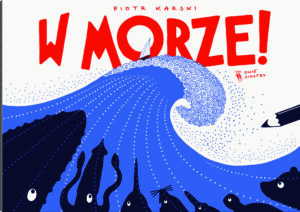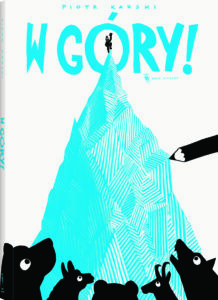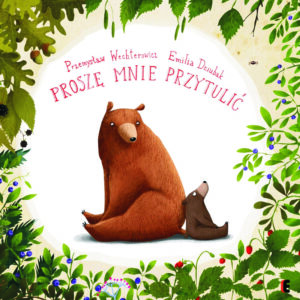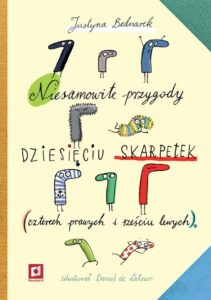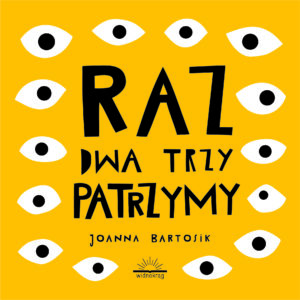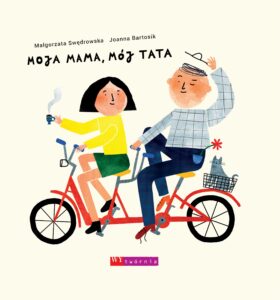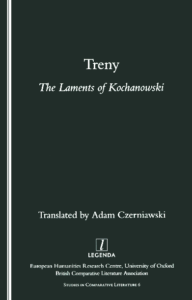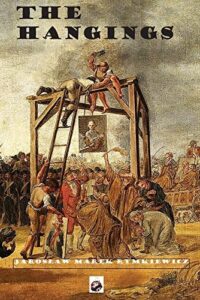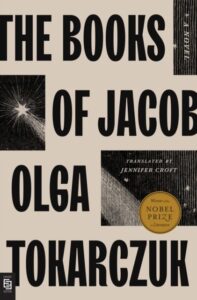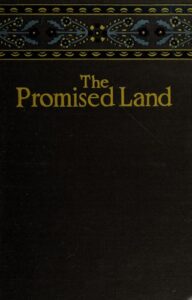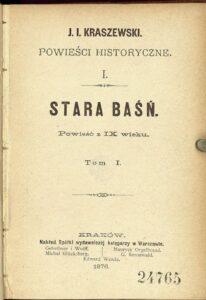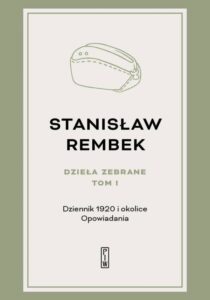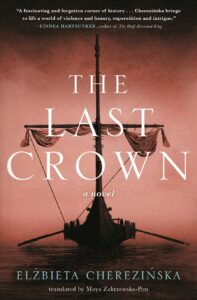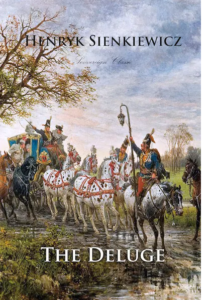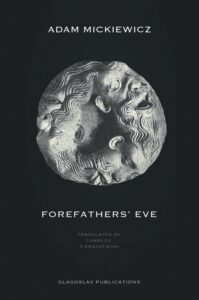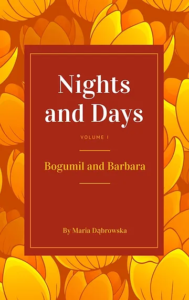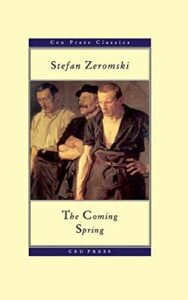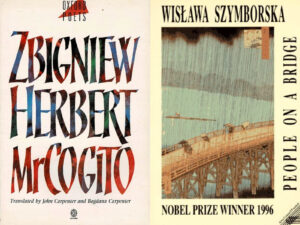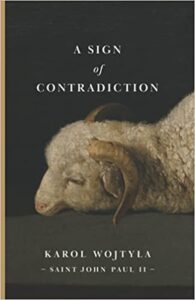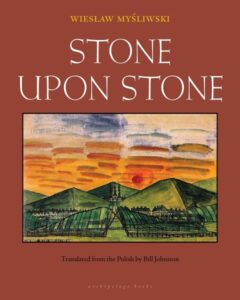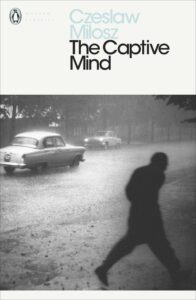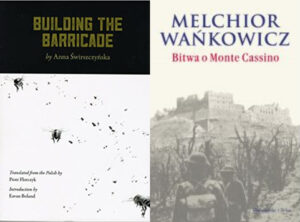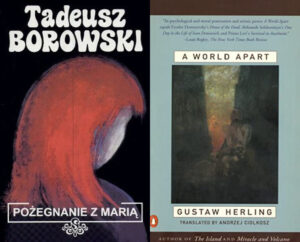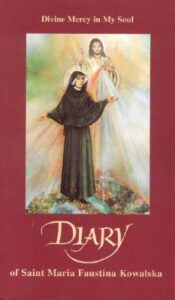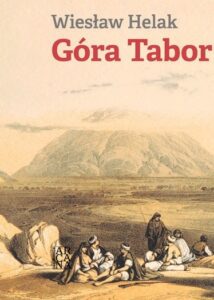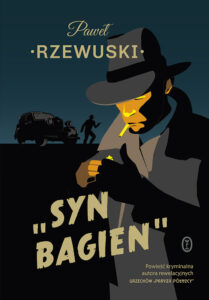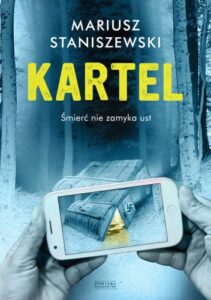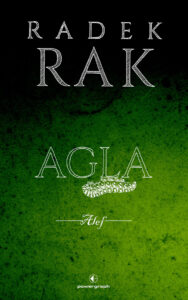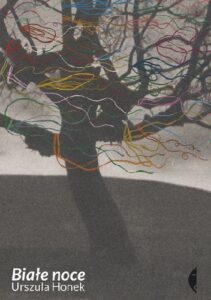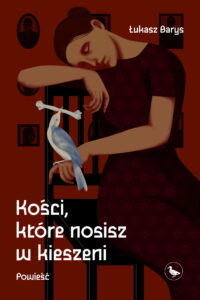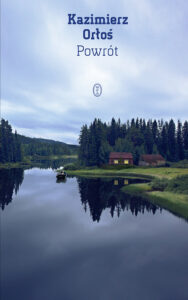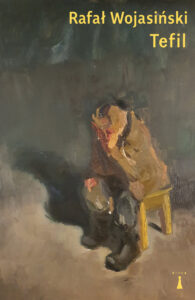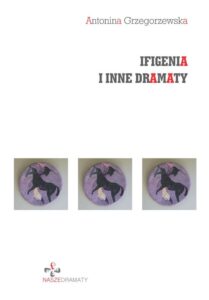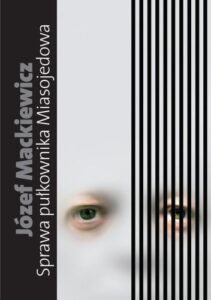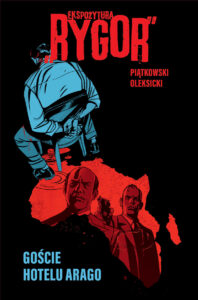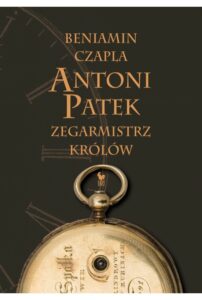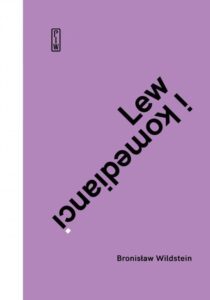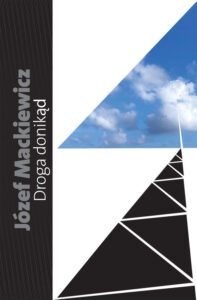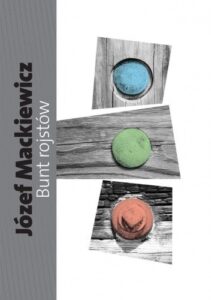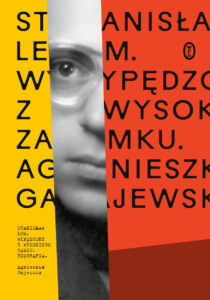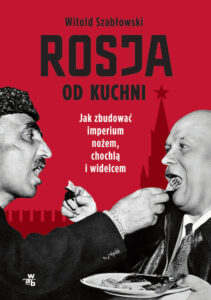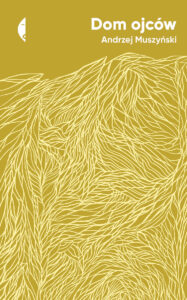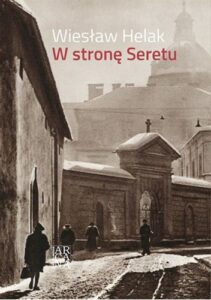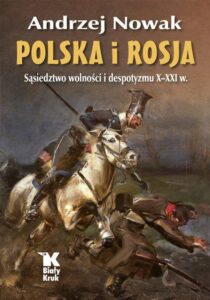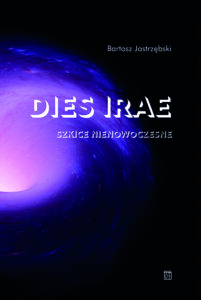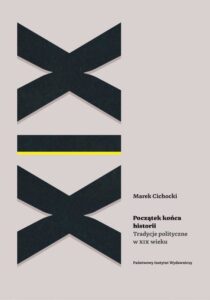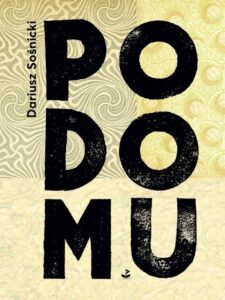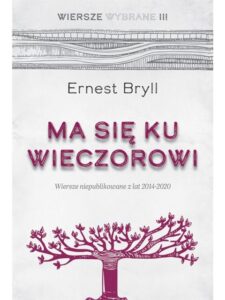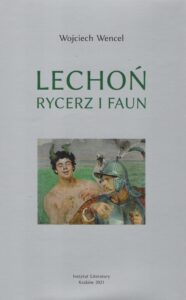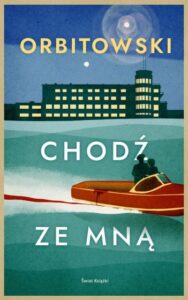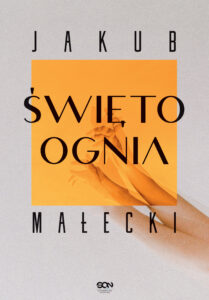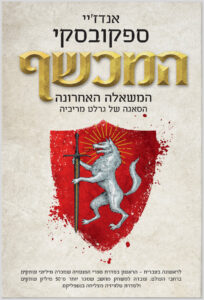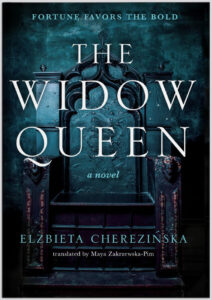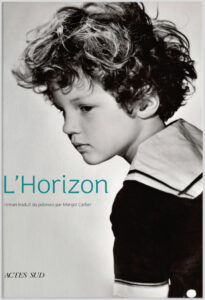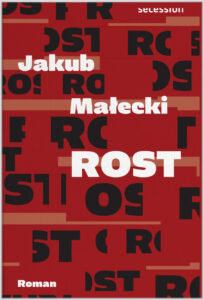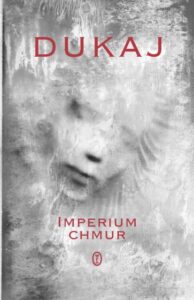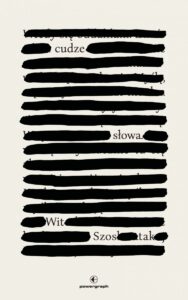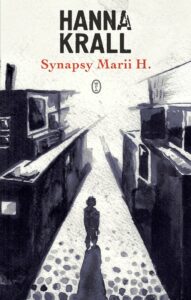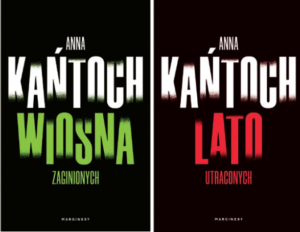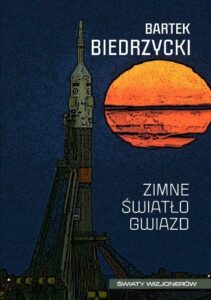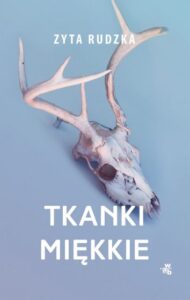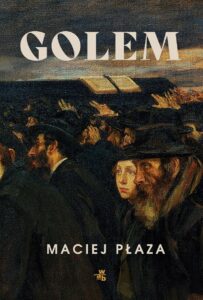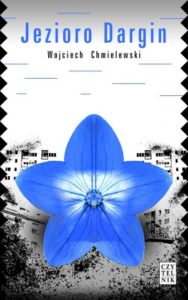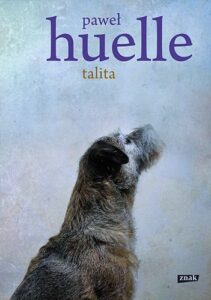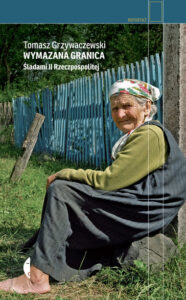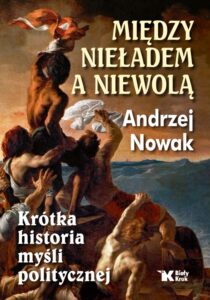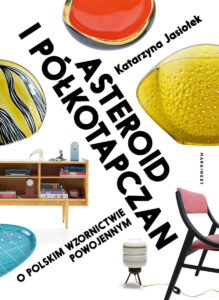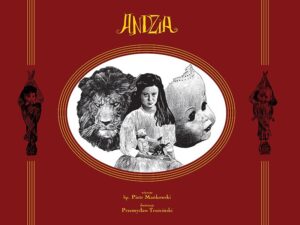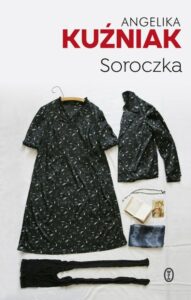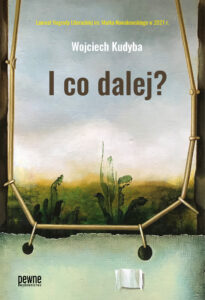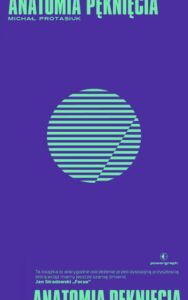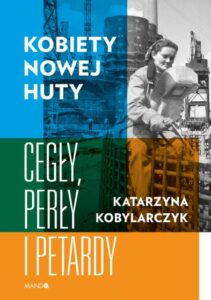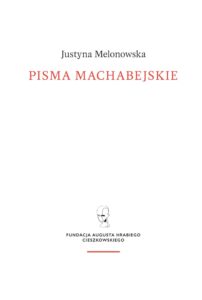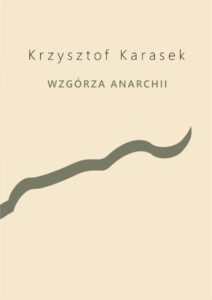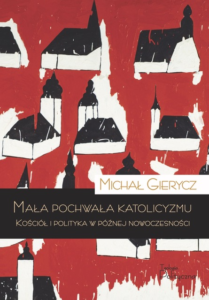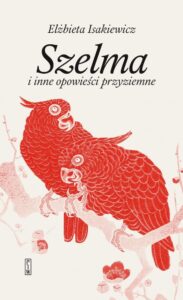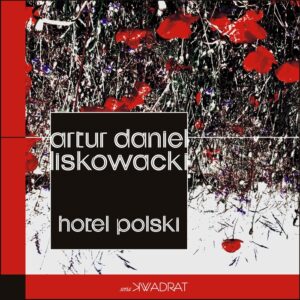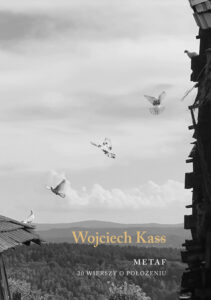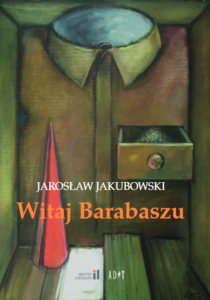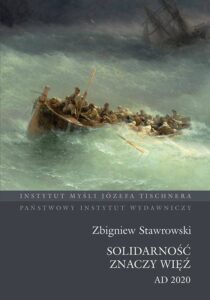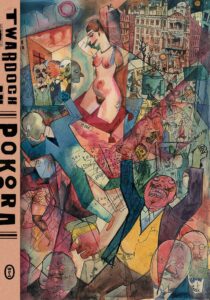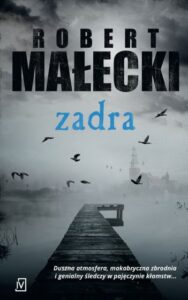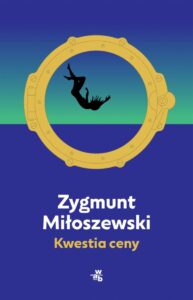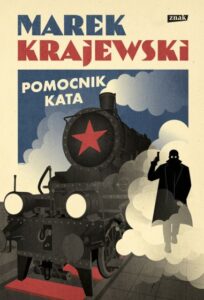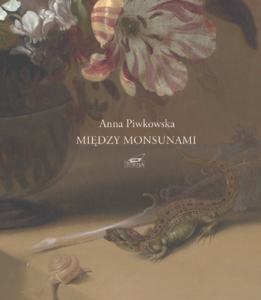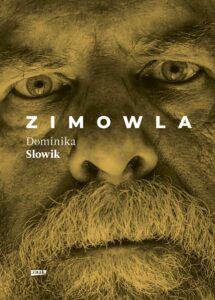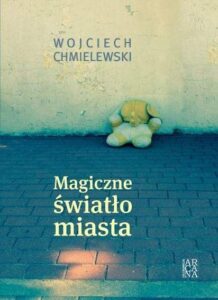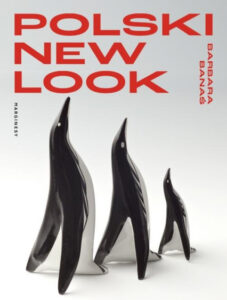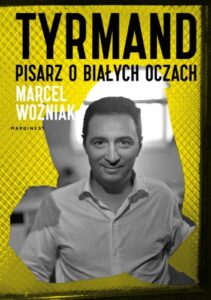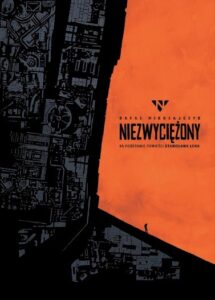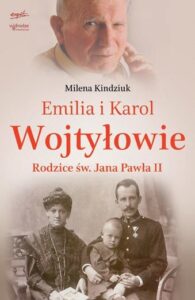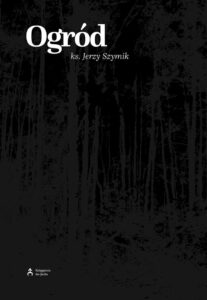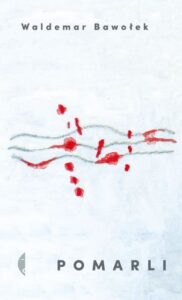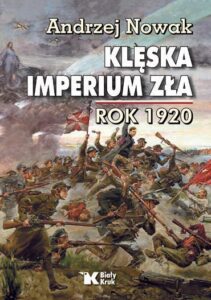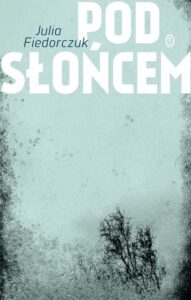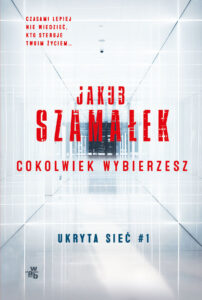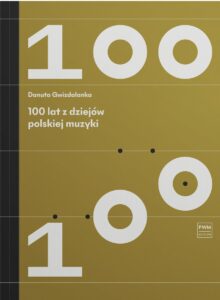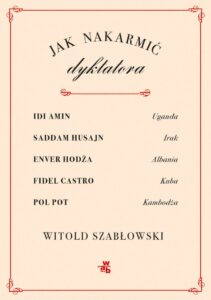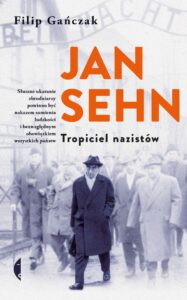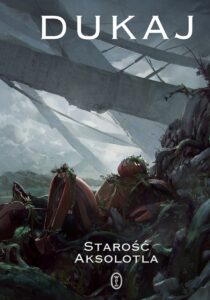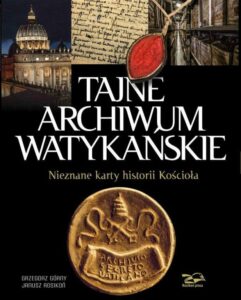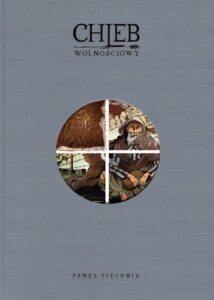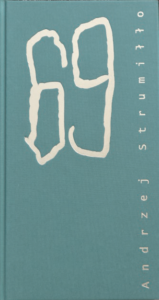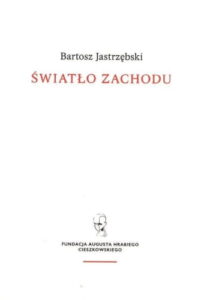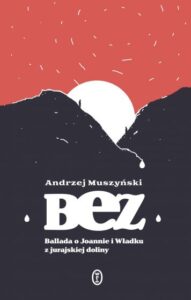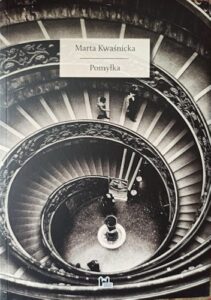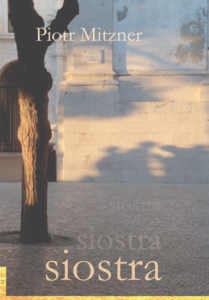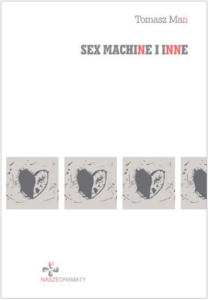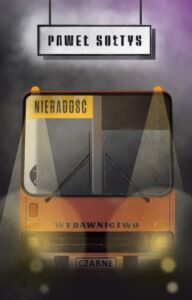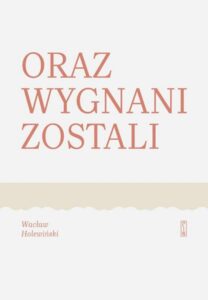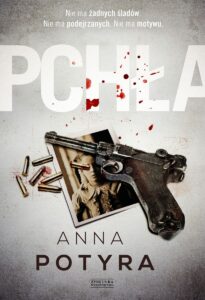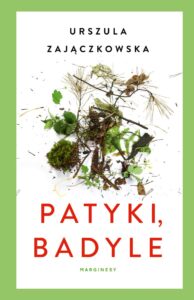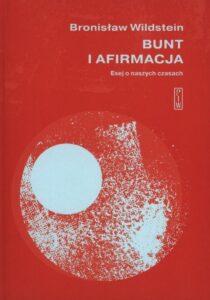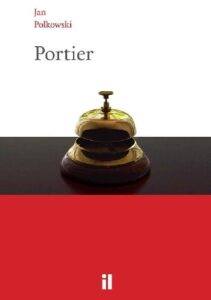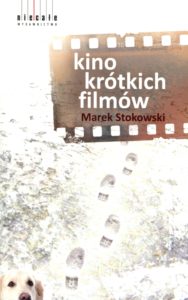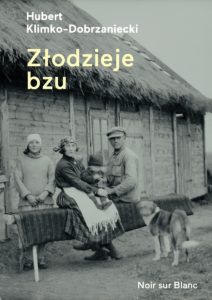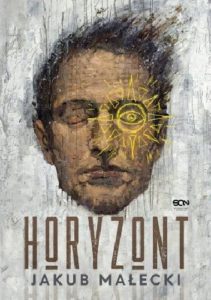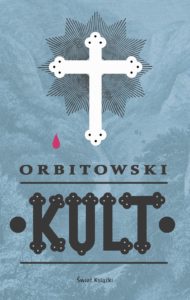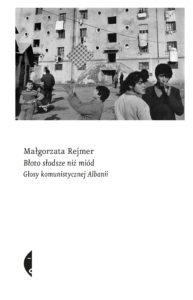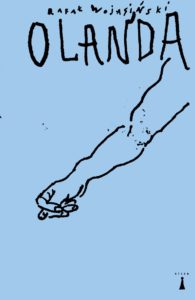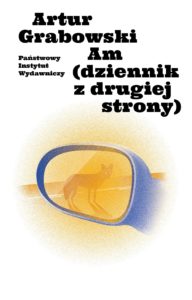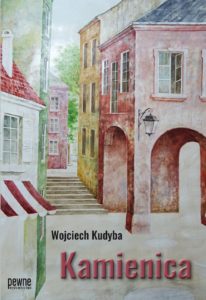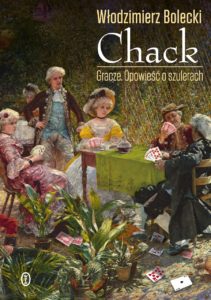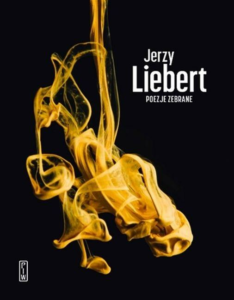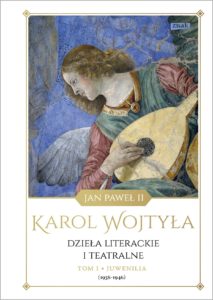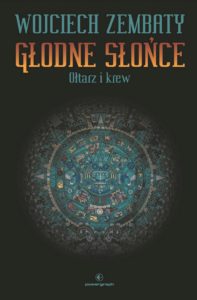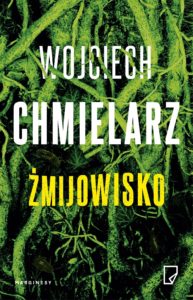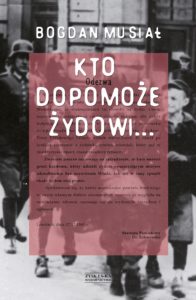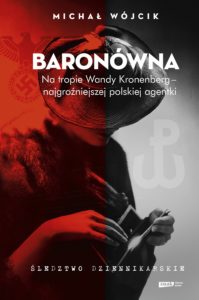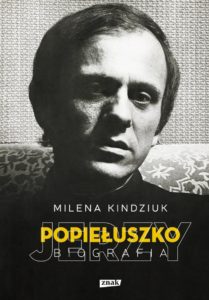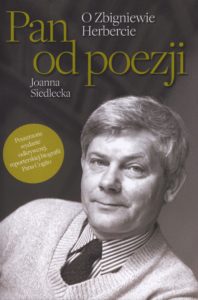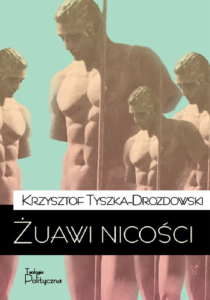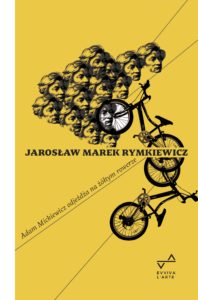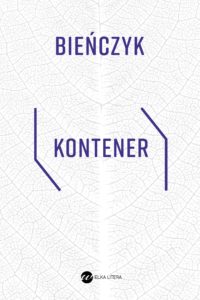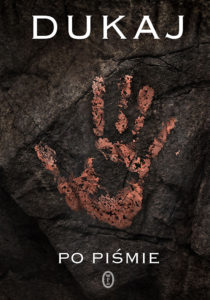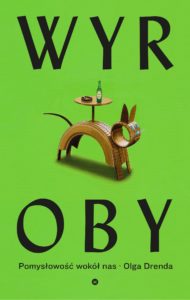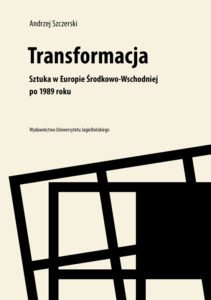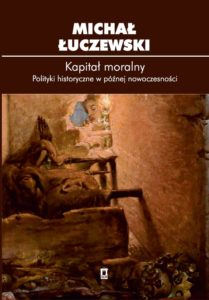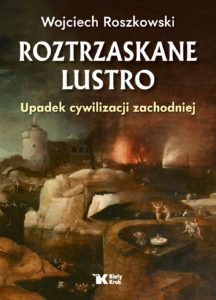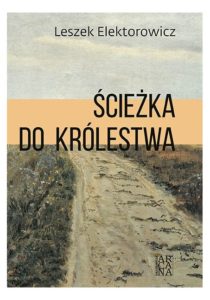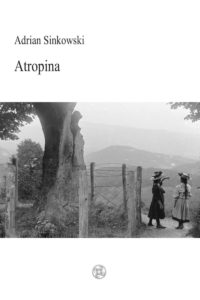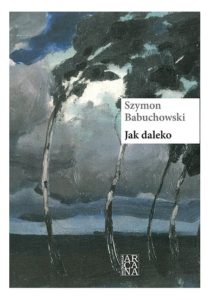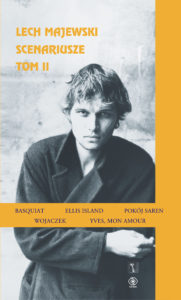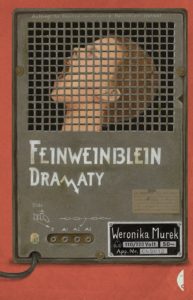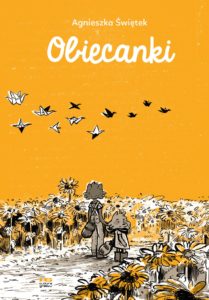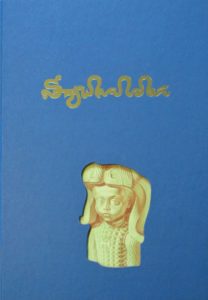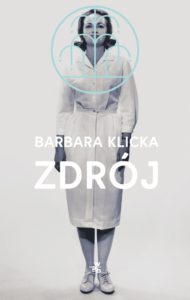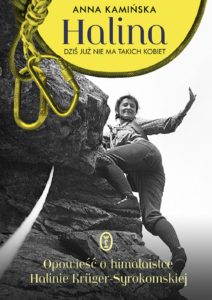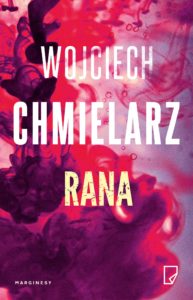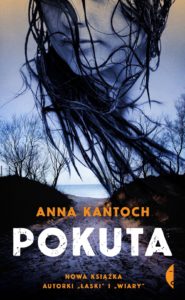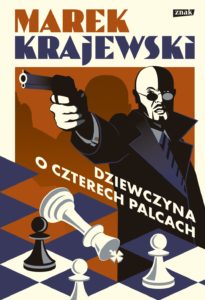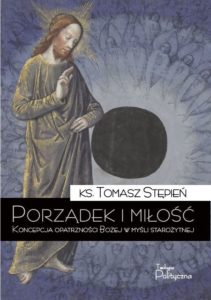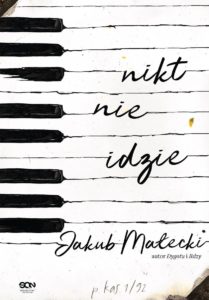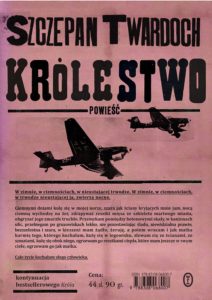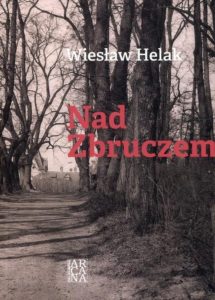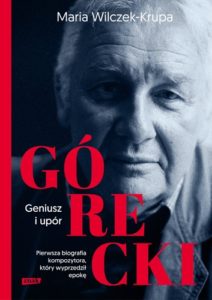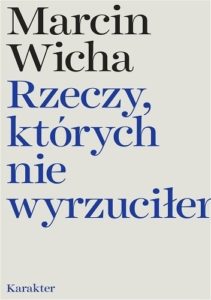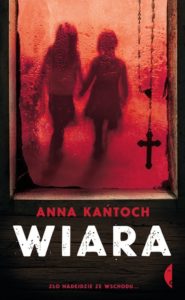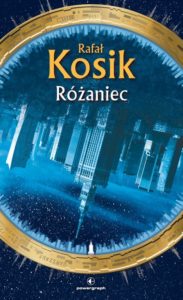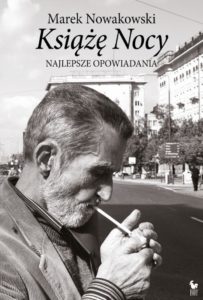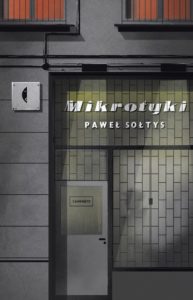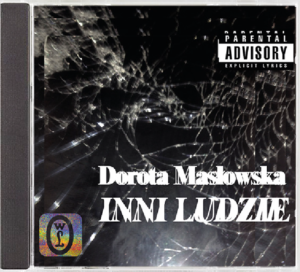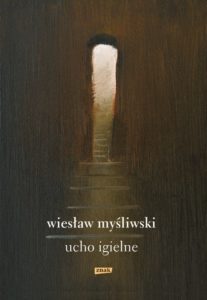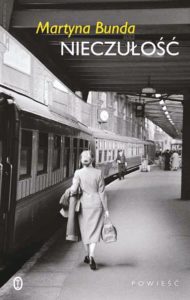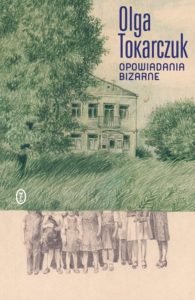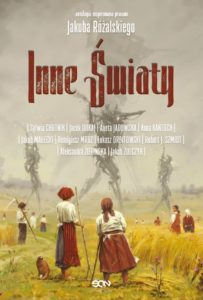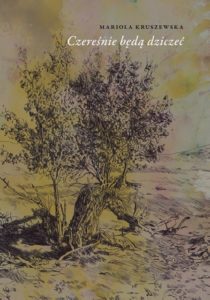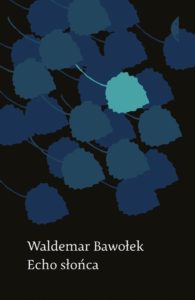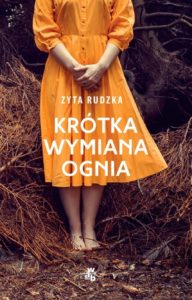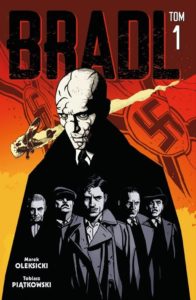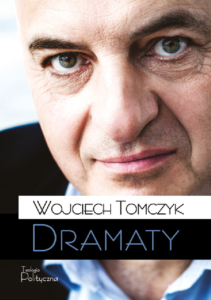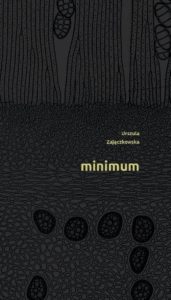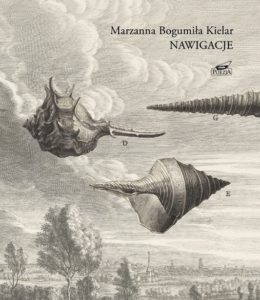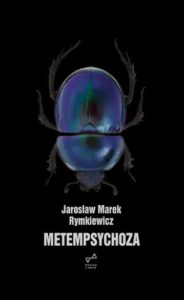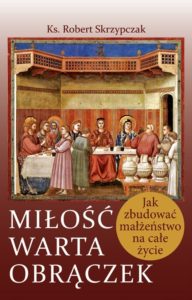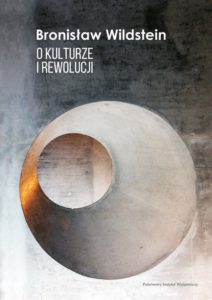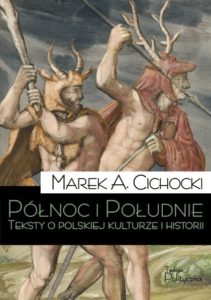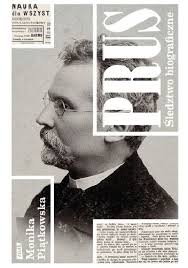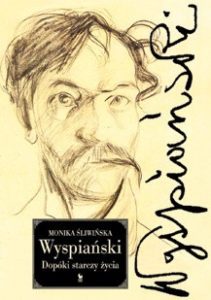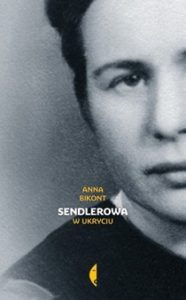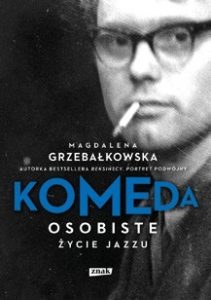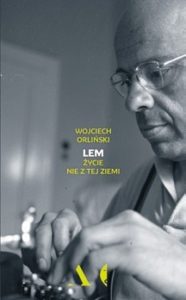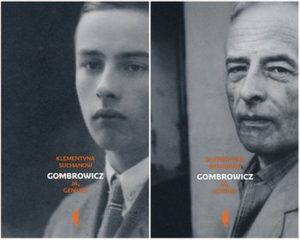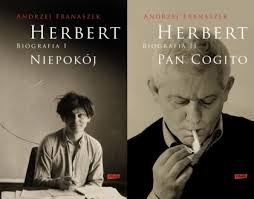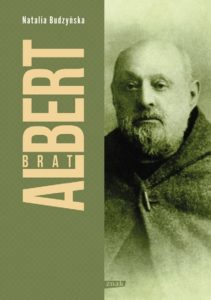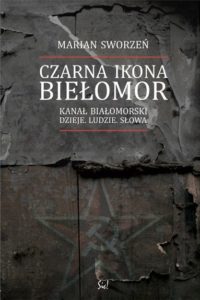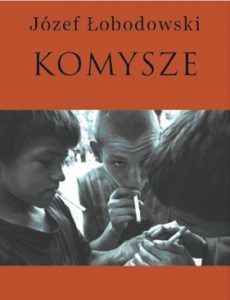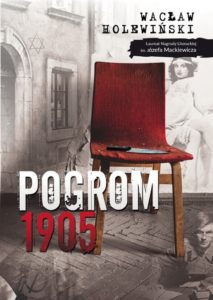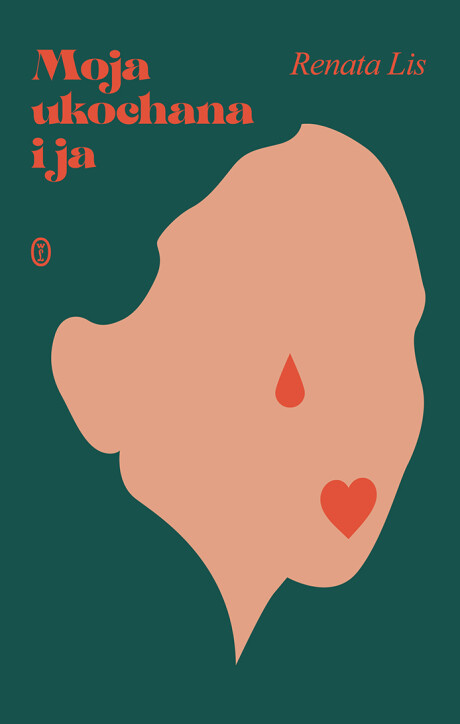

Translation rights: Joanna Dąbrowska, j.dabrowska@wydawnictwoliterackie.pl
A moving story of love between women
My Beloved and I is an autobiography. In Poland, same-sex couples are still unable to formalise their relationship, the inheritance of their property remains unregulated and uncertain, and their bond remains a private fact that can be disputed at any point in time. The story Renata Lis has to tell, of living in a stable and happy relationship with Elżbieta since the mid-1990s, could serve as an argument in the ongoing debate. The author does not, however, use the impassioned language of political debate and firebrand journalism; if she speaks of passion, it is purely romantic.
Renata Lis draws from books by Didier Eribon and Annie Ernaux, and from the wealth of humanist literature on same-sex relationships, but the power of her book lies in her self-analysis. Of herself she writes: born into a family with no cultural ambitions, in a “rough” part of Warsaw. Her breakthrough came with her decision in high school to continue her studies, and then taking seminars with Professor Maria Janion. Yet her greatest turning point was meeting Elżbieta, a person with her own view on many things in life, her feet planted firmly on the ground, never willing to give up. It was an enormous challenge for them to run a small publishing house together, operating in a fragile economy with unclear rules, and with no initial capital to get them off the ground. Two new bits of information have emerged since this book was published: the publishing house has closed its doors, and Renata and Elżbieta have tied the knot in Denmark.
Anna Nasiłowska
Translated by Soren Gauger
Renata Lis My Beloved and I
The Folder
The folder is made of brown cardboard, tied up with ribbons. The two words printed in my father’s hand speak both of me, and not of me: Renata-Katarzyna.
Renata and Katarzyna joined by a mechanic’s hand. My father knew what rectifiers, bearing pullers and camshaft locking tools are for, but his toolbox had no lettering skills. Signing the folder, he used the hyphen just as any naïve artist finds his own language. It never occurred to him to find instructions on how to use short, long and medium hyphens. He needed to join two names, so he just took the first hyphen he saw – the shortest one – and slapped them together. That was how he mortared the first two bricks of my existence into words. He wrote the beginning of the story.
*
I don’t suppose the folder idea was my father’s. I assume it was my mother’s, given she spent half her life compulsively collecting things; it might have also come from both of them. Yet it was my father’s hand that first wrote their daughter’s names. That means my mother at least let my father hold the pen at that time, thus acknowledging his power over her life and mine. My written existence thus begins with the symbolic triumph of the patriarchy. At the same time, this triumph is pure farce.
Father’s talent for technical lettering was a source of pride, and by giving him the right to inscribe his first child’s “personal folder”, it was probably not the first time my mother was sealing his conviction that this mundane ability was an achievement and an asset, and above all, his unimpeachable advantage. Because apart from the purely physical ones, father had no advantages. Dumb luck had made him top dog in the household, the patriarchy that won it for him, without having deserved it.
I think my mother less unconsciously than semi-consciously gave father a head start: she realised she was doing it, without fully realising what it was. She was not an intellectual, she did not think in terms of concepts. This was unlike her elder sister T., my aunt, who upheld the patriarchy with total awareness, without a flicker of shame. She would sit in our kitchen and complain to my mother she’d been asking her husband to do some minor chore for weeks, to pound in a nail, perhaps, on which to hang a landscape she’d painted. “Why don’t you do it yourself?” my mother asked. My aunt replied she couldn’t, even if she knew how, because then she’d be infringing on her husband’s male role and he would feel bad. I remember the shock I felt hearing that. I understood then, as an early teenager, that male power was based on a lie that was substantiated and even – horror of horrors – orchestrated by women. They’re the ones who set the stage for men to perform their manliness, they are the fawning audience.
Some other time, I remember catching a scrap of a conversation in the kitchen, my aunt telling my mother: “Tell him that. Tell him it disgusts you.”
*
After all, my mother knew how to write. You could have filled whole volumes with the scraps of writing she produced every day. “Renata, there’s soup for lunch, cabbage rolls in the fridge, the potatoes need boiling.” I found little bits of paper like that, written in my mother’s hand, on the kitchen table when I got home from school. She signed them: “mama”. Always with a lowercase letter. For her daughter, the small “m” stood in for the lost object of desire.
*
Mother also wrote for her own satisfaction. She took notes, as I called them, on father’s various shows of disrespect. She did this for a divorce, though this never came, because then she would have lost the flat she’d found with so much effort, she’d bought largely with her own money, and had decorated, again with her own money, and sometimes with her own hands, as well. Shared marital property, which I demand for myself and my beloved, turned against my mother.
(I knew what she had in that drawer, which is why I was afraid to look.)
*
A year and a half before she died, mother discovered a new literary style. On the back of a postcard with a girl’s portrait, à la Wyspiański, for the first time she wrote a few words that pertained neither to lunch nor to father’s aggression: “Wishing you joy, smiles and good weather, not only on Kids’ Day, but for all your life, Renata, from mama, because you’ll always be my kid.” It’s a shame she didn’t pursue this further; her premature death kept her talent from flourishing.
Certificate of Live Birth
A sheet of yellowed paper, I pull it from the folder. It is torn at the top, as if ripped from a pad of identical forms in one sweeping movement. The Central Railway Hospital in Międzylesie certifies that citizen Lis Elżbieta, maiden name Dmitrusienko, born in Łapy, a resident of Warsaw, by profession a State Railway assistant, employed in the Buildings Department, gave birth on 18 September 1970 at 6.30 a.m. to a living infant, female in gender, weighing 2860 grams, her first child.
“A live birth,” I read on the reverse, “is when an infant, directly after being expelled or pulled from the mother’s organism shows at least one of the following signs of life: a beating heart, breathing, throbbing of the umbilical cord, involuntary muscle contractions, and if it: 1) weighs at least 1,001 grams, or 2) weighs at least 601 grams, and less than 1,001 grams and has survived a minimum of twenty-four hours.”
The certainty the midwives expressed on that piece of paper in highly indicative fashion, based on facts as hard as a corpse in a mortuary, gives me a sense of intangible anxiety. It also daunts me, gives me pause. How can it be they knew at once I was alive, while to this day I fear to say it out loud, as if still unable to believe it were true.
Birth Certificate
This perfectly rectangular piece of paper with the crest of the Polish People’s Republic is another story entirely. It is part of a process that involves cutting the daughter from the mother’s body. It is the short-form birth certificate, impersonally filled out with a typewriter.
Father, who does not appear on the hospital certificate at all, emerges here deus ex machina. He not only makes himself visible; he takes pride of place at once. The official document imposes an order, and with it, a hierarchy: first the father, then the mother; father up top, mother down below. On this piece of paper, in this order, mother and daughter are ascribed to husband and father. Or rather, to his surname, passed down to him by his male ancestors, but which is not him himself.
Rags
Two strips of material tell yet another story; these are artefacts from the same process as certifying a live birth. Mother held onto them as keepsakes, and putting them in the folder, she made them a document no less important than the stamped pieces of paper. In brown or browned ink, now resembling dried blood, the midwife’s hand wrote LIS ELŻBIETA, a large letter D in inverted commas and the date and hour of my birth.
The “D” stands for daughter. What do the inverted commas stand for? That’s easy. As we all know, inverted commas are used to indicate quotations, pseudonyms and irony. With me, the word “daughter” is just that: a quotation, a pseudonym, irony.
*
So they put those rags on her, on my wrists when mother expelled me, herself, from her organism. To cover the broken umbilical cord in that indeterminate period of time that stretches between the severance of the physical bond and the fastening of a symbolic one. They served to keep me from being mistaken for any other child. And so I wasn’t. Today I learn from those rags that at the very beginning she (I) was defined by three categories: mother, “gender” and time.
*
Infant socks, little blue pouches cinched tight with strings, also keepsakes from the stay my mother and I had at the railway hospital in Międzylesie. They ended up in the folder, but with no inscriptions, so they tell us nothing. Nothing apart from tenderness and care.
Baptism Certificate
Shaped like the cardiac muscle, coloured blood-red, in a garland of thorns, flames, with the Christian cross stitched in the upper part like the cross on Mount Giewont – this is the round stamp of the Roman Catholic Parish of the Sacred Heart of Jesus on Kawęczyńska Street in Warsaw, which adorns this document. It is a neatly cut sheet of graph paper, which has my first, middle and last name and baptism date: 11 April 1971, written in navy blue ink. The priest’s handwriting is slender and sloping.
Father and mother – in that order – appear under different surnames here (mother under her maiden name), sealed in brackets, next to which the priest’s hand jotted down: contr. civ. A civil contract. The church would not call it a marriage, nor would they consider them spouses.
Mother needed that document for my first communion, in a different parish, at the Christ the King Church. In one fell swoop, the priest from Kawęczyńska confirmed my baptism, but also my parents’ grievous sin, the fruit of which is me.
The X-ray Photograph
This might remind you of the sanatorium in Davos, or of “music on bones”, hit records smuggled in from the “decadent” West to the Soviet Union, illegally recorded on old X-rays. It’s in a separate manila envelope. It is a photograph of the girl’s hip bones, taken two months after she was born. The typed description confirms: hypoplasia cex. cong. bil.
My birth defect is acetabular dysplasia. Both hips, but with no evident malalignments, so Jacob’s wrestling match with the angel is not captured on this plate and I am forced to admit the whole allusion is out of joint.
The rest
Apart from that, the folder holds evidence of my earliest achievements: ‘preschool graduation certificate’; a first-place certificate in a song competition at a holiday home in Wisła in January 1977; a third-place certificate for ‘throwing a ball in a group of younger girls’ at a summer camp, somewhere, who knows when.
And a black-and-white postcard from a summer camp in Jeleśnia, written in my still-shaky hand, with blunders and spelling mistakes, officially addressed to my mother and father: E. and W. Lis, but beginning with the words: Dear Mama.
*
Somewhere between the end of preschool and the beginning of school, at the twilight of the Gierek epoch, my parents lost interest in archiving my existence. Maybe because life got in the way, they had a second child and their relationship took a turn for the worse? I don’t know. At any rate, from then on my archive peters off.
I took the brown Renata-Katarzyna folder tied with a ribbon from my family house when, after my mother’s death, it drifted into an odd lethargy, inhabited only by light and dust.
Around Szmulki
Photo of a girl with ponytails
There’s no doubt something joins the two of us. A thin, but surprisingly strong thread. I never think: she’s me. Still, in some way, we’re very close. Maybe because she experienced what I remember? Though she also experienced a ton of things I don’t remember. And I remember her experiences that she never experienced. It’s complex, all tangled up.
She could also be my long lost child. Not in the sense that she died. She’s alive, but in a different ring of time. Around the bend. Somewhere out there.
I don’t think: she’s my daughter. That’s not how I feel her. She’s just a child. A girl.
It’s a colour photograph, portrait size. She’s got two funny ponytails, which she and my mother (we happen to share a mother) gathered up with black rubber bands. The hair is brown, the face mild and round. Her wide-open eyes are greenish-brown, or ‘beer-coloured’, as they said at the time, her eyelashes flip up. She stares straight into the lens. A nice-looking child, over whom no shadow falls. She is dressed in a navy-blue tunic with a white collar – a little girl’s mandatory school outfit, fall/winter version. It is September 1977, her first day of Grade One at the Insurgents of 1863 Elementary School.
Archivist’s Note
I have no photographs of my mother hugging me or even holding hands with me. I have another one. It’s summer in Bory Tucholskie; I’m just a few years old, sitting on a lawn chair, with a live duckling on my lap. Mother is kneeling next to me, holding a bowl, feeding me with a spoon. Varied are the languages of love.
Szmul Zbytkower
There’s not much I recall from that early period.
We lived in Szmulki, in a notorious neighbourhood, though as a child I had no idea. It was my world – I knew no other.
Szmulki was like an island that surfaced with the development of the railroad. In the latter half of the nineteenth century, its shores were marked by the St. Petersburg, Terespol and the regional Vistula railway lines. (The perfect place for prisoner transports says something in me, who knows what).
In the eighteenth century, the owner of the land that became the island was Samuel (Szmul) Sonnenberg, aka Zbytkower, a merchant and a banker, Warsaw’s richest Jew. As Anna Maria Szczepan-Wojnarska notes, ‘Zbytkower gained possession of Targówek from King Stanisław August Poniatowski, and there he founded the Bojmurek farm, and a settlement widely known (to this day) as Szmulowizna.
He built a slaughterhouse, meat storehouses, and a tannery in Warsaw’s Praga district. He sent grain and wood up the Vistula River to Gdańsk, he exported cattle and leather. He leased an inn, distilleries and breweries. He owned sawmills and brickyards. He funded a Praga synagogue and the Jewish cemetery in Brodno’. He also took part in the Council of Four Lands, at which representatives of the main qahals of Poland voiced the concerns of their societies. In 1794, during the slaughter of Praga, he hid local bourgeoisie in his home, and paid ransoms for Praga children abducted by Cossacks. After his death in 1801, he was buried in the Brodno cemetery; his grave was destroyed during World War Two. Szmul Zbytkower’s face is depicted in Bernard Bellotto’s painting The Election of Stanisław II August in Wola. His great-grandson was Michał Bergson, a composer and pianist, and the father of philosopher Henri Bergson.
For ages I knew nothing about Szmul Sonnenberg and his family. The whole Jewish thing was odd, to say the least. Living in Szmulki, Jews were literally right under your nose, and yet it was like they didn’t exist. The Wikipedia note on the history of Szmulowizna replicates the structure of my consciousness at the time: in the nineteenth century a railway was built in our district, in the early twentieth century the Radziwiłłs bought Michałow (part of Szmulki closer to Targowek), in the inter-war period the road and plumbing infrastructure was extended, a tram depot and the Sacred Heart Basilica were built, and then came 1944 and Szmulki flourished with as Warsaw life was reborn. The whole existence and annihilation of Szmulki’s Jews is buried under the floorboards of this single sentence: ‘After the war, the flats abandoned by the Jewish population were occupied by the poor folk of Warsaw’s suburbs’.
Nefretiti of Korsak Street
My mother dressed primly and fashionably back then. I remember her shiny Italian blouses, a trendy Bahama-yellow jumpsuit that cinched at the waist, suede high-heel boots. She always made up her eyes, backcombed her hair and pinned it into a banana bun, using long metal pins and hairspray.
For the girl with ponytails, her style habits seemed remote and inaccessible. It would not have occurred to her that she and her mother were creatures of one species or even the same gender. She never tried on her mother’s clothing, jewellery, shoes. The hairpins were instruments of inscrutable design, she would not have connected them to her ponytails, however much those sharp objects held a fascination.
Her mother she associated with the Egyptian Queen Nefretiti, whose beautiful proud head graced her key-chain. That she had married beneath her station must have struck anyone she met. Father was no pharaoh. He wouldn’t have really been suited for much of anything, except perhaps depression therapy, which he might have got were it not for the times. Mother was born in November 1944. Father in March 1945.
The Orthodox church and the four sleepers
The Saint Mary Magdalene Equal to the Apostles Orthodox Church in Praga, on Solidarności Avenue, which bore the name of Karol Świerczewski in 1991 was a plain and natural fact to me; it had always been there. I didn’t wonder where it came from and I only had a foggy notion of it being different from the Catholic churches. Only now have I learned it was built in the latter half of the nineteenth century to cater to the Orthodox Russians on the right bank of Warsaw and as a sign of the Russian Empire’s cultural dominance over the Poles. In those days I had no idea about the history of the Praga district, nor did anyone stop to explain to me what an Orthodox church was. It was not an issue for me or anyone I knew. My mother just always called it ‘the Orthodox church’ – when she was giving me directions, for instance, she’d say something was next to the Orthodox church, behind the Orthodox church.
At the same time, that temple in Praga, with its five onion domes, built on a ground plan shaped like a Greco-Catholic cross, was a bit mysterious, and it was certainly odd. It stood out from its surroundings like a sore thumb. It was like a no-man’s land you never entered, only walked around or bypassed. I knew – who knows how – that the Praga Orthodox church was not a museum, that some kind of life did go on inside it, but that life neither concerned nor interested us. It wasn’t until I was at university that I went in for the first time. Near the Orthodox church, across from the State Railway Front Office, there was also a newspaper stand where, in the 1990s, on the way home from school, I would sometimes buy a gay magazine, Different.
Between the Orthodox church and the Railway Front Office was a monument officially called the Brothers in Arms statue, and unofficially, The Four Sleepers and Three Fighters. For daily purposes we shortened the name to The Four Sleepers or even just The Sleepers. We said, for instance, let’s meet by the Sleepers, or that you have to disembark the tram at the Sleepers, and so on.
That was the first monument built in Warsaw after the war. Sources from the 1940s sometimes call it the Monument of Gratitude or Liberation, because it was meant to commemorate the battle of Polish and Soviet soldiers and the over half a million Red Army soldiers who fell while fighting the Germans in Polish lands during World War Two.
It was the joint work of Polish and Soviet artists, and a Red Army major was specially assigned to ensure the statue had the correct ideological content. The monument was placed in front of the Railway Front Office, which was the temporary headquarters of the new authorities, with the menacing Security Bureau. The unveiling was attended by President of the State National Council Bolesław Bierut, Prime Minister Edward Osobka-Morawski, Polish Army Chief-of-Staff Michał Rola-Żymierski and a Soviet army attaché, Maslov.
Wikipedia says: ‘The main group of figures is three Soviet soldiers in combat, turned to the west. Two of them are covering for a fellow soldier between them, bent way over to toss a grenade. His dynamic pose contrasts with the staticity of the lower part of the monument. This portrays four soldiers, two Polish and two Soviet, set on diagonals on four low corner pedestals. All four heads are bent, full of symbolic, eternal vigilance’.
The monument had an inscription in Polish and in Russian: ‘In tribute to the heroes of the Soviet army, comrades in arms who gave their lives for the freedom and independence of the Polish nation; this monument was raised by the inhabitants of Warsaw. 1945’. Waiting for a tram at the stop by the monument, I often read that inscription. It reeked of the pathos of history, it was as moving as an anthem. My generation was stuffed full of war memories like geese for foie gras. Paradoxically, the ones who now profit from our martyrology-fattened livers are not the ones who did the fattening.
The Sleepers monument was Praga’s most important reference point, a place where transport lines intersect, the axis of our Praga world. It was not considered a symbol of domination, none of us thought it had any significance beyond the everyday – it was like an unusual tree or boulder, one of those natural landmarks that have always helped people get their bearings.
In 2011, the monument was removed from Wileński Square to build a metro station. It was meant to undergo conservation. In 2015 they decided not to put it back.
Praga’s decommunisation meant the centralisation of memory, imposing an abstract network of concepts and post-factum interpretations on the life of our district. Removing the Four Sleepers from Wileński Square was like an absurd operation on the past, as if someone believed the past could be manipulated. That the gesture of removing the monument could erase the hard fact of captivity, also known as liberation; it could solve the dilemma of gratitude to the liberators, and at the same time, for evident reasons, liberate us of a thorn in our side. This is how children think – remove something from sight and the problem that comes with it ceases to exist. If we hide this monument the Empire will forget all about us and won’t come for us. In 2022 the Empire once again proved that it will come whenever it likes. It also showed, however – and this is a crucial historical novelty – that it is a colossus with feet of clay.
Grandpa’s wedding ring
When she was struck by one of her many childhood attacks of strep throat, her Polish grandfather would come give her cupping therapy. These were commonly in use at the time, the doctors from the state clinic prescribed them alongside shots of penicillin. Grandpa would wrap cotton around a special wand, dip it in alcohol and light it up. With this little torch he would ignite all the cups inside and, one by one, place them on her back, where they would painfully suck up her skin. They left round bruises; they said this was the bad blood that caused the sickness.
Grandpa was the only person around who showed her emotions in a language a small child could grasp. He took her on walks in the forest and to the beach in Jozefów; in the spring, wading in the water, he picked kingcups for her, in the summer he swatted off flies with a leafy branch. Once they went to get a Christmas tree together, and that was the only pleasant Yuletide memory she ever had.
Many years later, when Grandpa died, Grandma gave her his wedding ring.
Grandma did not mourn when Grandpa died. She appreciated the fact that she would be able to live for herself. That was how she phrased it. This sank deep in the memory of the granddaughter newly wedded to the deceased.
The fall of communism on the ninth floor
A girl she knew from preschool lived on the same floor. She had an olive complexion, black hair and dark brown eyes, along with a Russian name and an Arab surname. They often played together, in one flat or the other. One day, when her mother wasn’t home, she gave N. her totemic toy – a fox. Just like that, for keeps.
This was a large anthropomorphic fox with chequered arms and legs, in corduroy shorts, with a furry yellow head. She gave it to N. with love, or some kind of budding communism was speaking through her. With this gesture she simultaneously obliterated the sacred law of property and symbolically denied the bonds of blood.
When her mother discovered what she’d done – and this was not difficult, because the girl made no secret of it, in fact she had no idea it could be a problem – she calmly visited N.’s mother and retrieved the fox. And so our two mothers overthrew communism on the ninth floor.
The Art of Loving
Our block of flats was on Tadeusz Korsak Street, which intersected with Kijowska and Ząbkowska. It was part of a new Szmulowizna housing estate. This estate, built in three stages in the late 1970s, merged with Szmulki’s old body like an implant from another time, another history. Praga’s iconic Brzeska Street, throbbing with seedy energy, the tacky, folksy kitsch of the Rożycki Bazaar, and the adjacent part of Targowa Street going towards the Powszechny Theatre were magical regions into which we seldom wandered.
Ząbkowska Street was laid with cobblestones at the time, travelled by horse-drawn carts with Gypsy
(Roma) women in colourful, flowing skirts. And at the corner of Korsak and Ząbkowska there was a blue-and-white figurine of the Virgin Mary, one of those bizarre Praga chapels that guests from the left bank like to stop and admire before hurrying back to their side of the river for safety.
A few dozen metres on, around the corner and the supermarket, where you could buy anything, there was a bookshop, with long line-ups in those days. Books were a sound investment in times of soaring inflation; they were desirable goods.
That was the bookshop where some time later I bought Michalina Wisłocka’s The Art of Loving. ‘Don’t be ashamed’, my mother said when she found it stashed behind the couch in my room.
Shame was the least of my issues with Wisłocka. Her way of writing had a grating tone, it was rough, combative, I disliked that tone and I disliked that raunchy broad in a head scarf. Especially since her book gave me the shivers.
My very young mind was riveted by drawings of various kinds of ‘virginal hymens’. I studied them obsessively, trying to guess which kind I had and if it wasn’t by any chance the worst one, perforated, or maybe entirely ossified, one of those that would mean I’d end up hospitalised, because no penis could tear through it.
The Art of Loving was a traumatising read and in no way has it helped me in life. It is the last thing I would give to my daughter.
Mother runs with a knife
It seemed no harm could come my way in our block of flats in Szmulki. The way to school also seemed safe, you just had to cross a narrow, quiet street and there you were. And yet in that small, secure space between home and school the girl with the ponytails had a brush with terrible harm or even death.
One day, coming home from school with a key around her neck, a strange guy began trailing her. Quite a bit older, pock-marked, in a zip-up dark-grey jacket. He kept a few paces behind her, without saying a word. When she entered her stairwell he followed suit. When she waited for the lift, he waited too. It was early in the day, the building at that hour was a great vacant space.
In the lift, her anxiety turned to fear. She was afraid he’d follow her from the lift to her flat, that he’d force his way inside before she could shut the door and then do something awful to her. She was afraid to show him she was afraid, as if feigning calm could delay the worst.
‘Which floor?’ he asked in an offhand tone of voice.
‘The ninth’, she said softly.
He pressed the button to the top floor, the eleventh.
All the way up eleven floors he kept silent. Nor did he make any gesture. They got out on the eleventh. He was still afraid to scare her, he wasn’t sure if there wasn’t someone in a flat who would come out into the hallway if she started screaming.
She went to the staircase and began the descent. He was close behind.
On the ninth floor she turned toward our flat. So did he. She took out her keys. He froze a little ways away, waiting for the right moment. She felt that in a second what she feared would occur, even if she didn’t know what it would be. The girl felt it under her skin, her nervous system knew something she didn’t.
She put the key in the lock. She was just about to turn it when it opened by itself and her mother was standing there before her.
She wasn’t supposed to be there, but for some reason, or as they say, by chance, she had stayed home longer than usual. When the girl with the ponytails told her about the guy who had trailed her all the way from school, and then took her to the eleventh floor in the lift, her mother snatched up a kitchen knife and dashed into the corridor, quick as a fox. She never caught the scumbag.
Varied are the languages of love.
School
The walls of our school at Szmulki had traces of bullets from World War Two. Inside it smelled of settled dust, whose particles danced in the sun when the weather was good and natural light sloped into the corridor. There was also a fragrant note of varnished fir-wood parquet floor and the dense odour of rubber-soled sneakers; a whiff of oil paint on the walls and fluoride during the mandatory dental check-ups, as well as the smell of burnt milk wafting in from the cafeteria; we had to drink it or we’d get rickets.
There was a darkness in that school. Its ambience was hard to pin down – it wasn’t an old prison, nor a hospital, nor a crumbling post-industrial site which, in another life, could have become a loft – like all of us, it had no other life than this.
Our school anthem was an uprising song using the lyrics of a Wincenty Pol poem, called ‘In the Bloody Field’ (also known by the titles ‘Reveille’, ‘Signal’, and others as well) – the quintessence of Polish Romanticism. Especially in a middle stanza: ‘Polish Eagle and Lithuanian crest, / Our men charged the field with a bare chest — / Hey, hi, watch the blood fly, the spirit fly, hey, hi! / Mother Poland, shine bright! / Jesus Mary, fight!’, which Marcin Król parodies so beautifully in his Romantic Journey.
The school has been around since the 1932–33 academic year, always in the same building. It was founded to give educations to poor Praga children. It had been converted from an old furniture factory. Before the war, children from Ząbkowska, Radzymińska, Nieporęcka, and Tarchomińska streets studied here.
During the German occupation only four rooms were left for study purposes, the rest was transformed into a military hospital. In 1943, the whole school became a hospital, and lessons were moved to temporary locations, including the cellars of the Sacred Heart Basilica on Kawęczyńska Street, where I was later to be baptised, and after that, I forged Father Alojzy’s signature for my confirmation.
Lessons returned to the school in 1944, when Praga was controlled by the Red Army and the Polish People’s Army. The school’s pre-war name was restored in 1958. In 1975 it received a new flag, funded by the Warsaw Alcohol and Yeast Industry Factory, which was practically right next door. The vodka plant paid to embroider the slogan: ‘Let Poland take heed / of the sons she will breed’. During school ceremonies we sang this phrase instead of the original ‘Mother Poland, shine bright! / Jesus Mary, fight!’
Over the pommel horse to the camp
She nagged her mother for so long that she took her to a doctor acquaintance to ask to be permanently excused from PE classes. The doctor, an older woman born before World War Two, wanted to be sure she understood why it was so important to her, and because she seemed intelligent, the girl with the ponytails told the truth: in the gym hall she feels like she’s in Auschwitz, reduced to just a body in a throng, packed up against one another, and it’s a kind of torture.
That’s just what she said, if not in those words, then in ones very much like them, and it really is how she felt. The world was overflowing with war just then, to an unimaginable degree, it filled the television, the school and the streets, which were spangled with ‘memory sites sanctified by Polish blood’. The fact that this teenage girl brought up the concept of Auschwitz (back then they still used the Polish name, Oświęcim) was not peculiar; the only odd part was connecting the German concentration camp with PE class.
The doctor was surprised by her response, maybe even ventured a gentle smile, but did not continue the discussion. The girl with the ponytails got her precious permission slip – not officially because of Auschwitz, but for some fabricated medical reason I can’t recall.
Only in writing this book did I discover that in the autumn of 1940, in our school on Kawęczyńska Street in Szmulki, in that very gymnasium where I couldn’t leap over the pummel horse, Jews from the ghetto underwent a selection. After that, they were transported to work camps.
In his Journal, Henryk Makower, head of the infectious diseases ward at the Bersohn and Bauman Children’s Hospital in the Warsaw Ghetto, describes this selection process at our elementary school: ‘A group of people were ushered in, usually a few dozen, and were commanded to strip to the waist. They were made to stand that way until the tests were finished, even in the winter, in the biting frost. […] The doctors asked questions, gave orders: to breathe, cough, do some gymnastics [italics mine – R. L.]’.
Pussy cat
At the turn of the 1970s and 80s kids at the school in Szmulki got candies from anonymous scouts in the Soviet Union for New Year’s, in plastic alarm-clock-shaped packages, as part of the Polish-Soviet Friendship Association, for which our entire class was automatically signed up. I never heard anyone complain.
At the same time, they offered the chance to study English. The lessons were optional and cost money. Though her parents had just average salaries, they signed her up for English in a heartbeat. They understood it was an investment in the future.
She always remembered her first English-language textbook – it was big, square-shaped, and greenish-blue. The cover had a boy in a baseball cap and the title: I Learn English. The first lesson was a poem about a cat: Pussy cat, pussy cat, where have you been? I’ve been to London to visit the Queen…
After that, my memory cuts off. My study of English also got cut off at the very start. I could not mentally cope with that foreign language, I was awkward and hesitant in class, no one at home could help me. My parents didn’t know foreign languages, nor how to study them. They were ready to commit money they were paid on my English, but it turned out that paying for lessons at school was not enough to secure a future for a child from Szmulki.
Memories of Pawiak inmates
It must have happened in one of the last years of elementary school, before the mid 1980s. Polish history and literature on the syllabus were saturated with the war. Talk about the ‘war’ needed no clarification – everyone immediately knew which one we meant. After all, the school year began with a visit to a place ‘of national memory sanctified by the blood of Poles’ near the East Station. On television, camp prisoners in striped outfits fed mouldy potatoes to their starved children through barbed wire fences, Sophie faced an impossible choice, you could buy volumes of a series about the war in the local newsstand, along with the Evening Express. I joined Zośka in weeping over Rudy’s battered body in Stones for the Rampart. Children born around 1970 had regular nightmares about the war and no one was especially surprised.
Magda was not a close friend, I never went to her house. She lived near our building in an old block of flats on Korsak Street. We were in the same class. I don’t remember why she gave me that book: it was big, dusty, bound in greenish canvas. Memories of Pawiak Inmates. Magda’s parents were not among those who collected their own libraries. Nor were mine, but in our house those few random books I suppose everyone in communist Poland had were Anna Karenina and half of the complete set of Adam Mickiewicz in the Sejmowe edition, passed down from someone. Maybe Magda’s grandma or grandpa had been in Pawiak or a camp? Of my relatives, only the brother of my Polish grandpa had been interned at Majdanek, but those were times when the Russians controlled the camp. It’s possible that Magda’s grandparents – if they really did have the Memories in their house because of their own memories – were no longer alive, because she gave me the book to keep, she never wanted it back.
There were endless descriptions of torture. Terrifying, raw, first-hand accounts. I don’t recall how much I read, but I quickly felt that I couldn’t read on or even be under the same roof as that book. I felt I had to get rid of it as soon as possible. I quickly tossed it in the garbage chute and only then breathed a sigh of relief. I sadly admit that I gave no thought to the people who left those memories behind, but at the same time, my gesture was not aimed at them – I was not rejecting their pain, only what was done to them. That book came to embody an emotional burden I could not support, and tossing it away was a magical act of self-preservation.
Translated by Soren Gauger
***
Renata Lis, Mi amada y yo
Arcoíris en Varsovia
El martes 26 de julio de 2022, después de una majestuosa tormenta con relámpagos, en Varsovia salió el arcoíris: nítido y colorido, de extremo a extremo. Muy pocas veces es tan perfecto. Fotografías del arcoíris inundaron Facebook y, con ellas, los previsibles comentarios: que en el cielo no gusta nuestro gobierno populista de derechas y que, sin duda, triunfará el arcoíris.
Aquel día, por la mañana, mi amada y yo teníamos una cita con el notario, una de importancia capital. Fue casi como una boda. Tras décadas de infructuosa espera a que se aprobara en Polonia una legislación igualitaria, y apremiadas por una enfermedad reciente que podría haber acabado para nosotras mucho peor de lo que lo hizo, decidimos sellar de forma oficial nuestra vida en común.
Sellar, por supuesto, solo pretendida, figurada y simbólicamente, porque en realidad se nos permitía tan solo declarar, sin garantías reales, que era nuestra voluntad oficializar esa vida en común en todos los órdenes posibles. Así que nuestra visita al notario fue más bien una imitación mala de una boda, y aun así entramos en la notaría un poco tensas, como dos novias no tan nuevas, perseguidas por las imágenes cinematográficas de huidas del altar y dándonos mutuamente ánimos con la ayuda del humor negro, infalible en estas situaciones.
Si en lugar de aquel sucedáneo hubiéramos tenido una boda normal en el Registro Civil —que hubiera sido lo más pertinente desde el punto de vista de nuestras necesidades—, entonces, en el momento culmen de la ceremonia, le habría dicho a Elżbieta con voz temblorosa: «Consciente de los derechos y obligaciones que se desprenden de la formación de una familia, declaro solemnemente que contraigo matrimonio contigo, Amada Mía, y juro que haré todo lo posible para que nuestro matrimonio sea consentido, feliz y duradero».
En la iglesia, con la que nosotras no tenemos nada que ver, pero que sigue siendo parte de la vida de muchas personas, habría dicho: «Yo, Renata, te tomo a ti, Amada Mía, como esposa, y te prometo amor, fidelidad y honestidad, y que no te abandonaré hasta la muerte. Así que ayúdame, Señor Dios Todopoderoso, Santísima Trinidad, así como todos los santos». (Los no creyentes pueden omitir la última frase).
Una boda humanista, por otro lado, da carta blanca al contenido de los votos matrimoniales; sin embargo, incluso en el marco de esta ceremonia independiente y laica, se considera que es el momento más importante del acontecimiento y subraya su carácter solemne. Los votos matrimoniales son siempre una ocasión para hacer transcendentes declaraciones de amor, no para el recuento exhaustivo de los metros cuadrados de las propiedades, el desglose de las referencias catastrales, y grisuras por el estilo.
Pues bueno, nuestra cuasi boda, en vez de ceremonia y votos, consistió en dos testamentos, dos poderes y una escritura notarial. Fue una interminable letanía mercantil de cifras y datos objetivos leídos en voz alta, donde no hubo lugar para confesiones solemnes, promesas, compromisos mutuos hasta la tumba, ni mucho menos besos, deseos y felicitaciones. Además, durante el procedimiento, se refirieron a nosotras en repetidas ocasiones como «solteras» y, pese a ser una pareja con casi treinta años de antigüedad, tuvimos que confirmarlo.
Selected samples
She climbed her first peaks in a headscarf at a time when women in the mountains were treated by climbers as an additional backpack. It was with her that female alpinism began! She gained recognition in a spectacular way. The path was considered a crossing for madmen. Especially since the tragic accident in 1929, preserved … Continue reading “Halina”
First, Marysia, a student of an exclusive private school in Warsaw’s Mokotów district, dies under the wheels of a train. Her teacher, Elżbieta, tries to find out what really happened. She starts a private investigation only soon to perish herself. But her body disappears, and the only people who have seen anything are Gniewomir, a … Continue reading “Wound”
A young girl, Regina Wieczorek, was found dead on the beach. She was nineteen years old and had no enemies. Fortunately, the culprit was quickly found. At least, that’s what the militia think. Meanwhile, one day in November, Jan Kowalski appears at the police station. He claims to have killed not only Regina but also … Continue reading “Penance”
The year is 1922. A dangerous time of breakthrough. In the Eastern Borderlands of the Republic of Poland, Bolshevik gangs sow terror, leaving behind the corpses of men and disgraced women. A ruthless secret intelligence race takes place between the Lviv-Warsaw-Free City of Gdańsk line. Lviv investigator Edward Popielski, called Łysy (“Hairless”), receives an offer … Continue reading “A Girl with Four Fingers”
This question is closely related to the next one, namely: if any goal exists, does life lead us to that goal in an orderly manner? In other words, is everything that happens to us just a set of chaotic events that, combined together, do not form a whole? To understand how the concept of providence … Continue reading “Order and Love”
The work of Józef Łobodowski (1909-1988) – a remarkable poet, prose writer, and translator, who spent most of his life in exile – is slowly being revived in Poland. Łobodowski’s brilliant three- volume novel, composed on an epic scale, concerns the fate of families and orphans unmoored by the Bolshevik Revolution and civil war and … Continue reading “Ukrainian Trilogy: Thickets, The Settlement, The Way Back”
